My kids will profess to the fact that I am a big fan of history. Through our years of homeschooling, history has been the basis of our education. I love the hearing of how brave men and women were able to make a difference. As long as stories are involved, I greatly enjoy learning about the past. But many learn differently. They need to interact with history. This is why living history museums are so important.
A Living History Farm
Nebraska is fortunate to have a wonderful living history farm. Right off the York Interstate 80 exit, you will find Wessels Living History Farm. Although this land was farm ground for years, now this land has been transformed into a farmstead. Visitors can see what living on a 1920’s Nebraska farm would have been like. 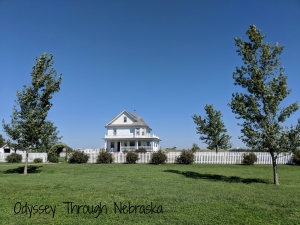 Dave Wessels of York had a dream that others would experience farm life, and his will left provisions for this to happen.
Dave Wessels of York had a dream that others would experience farm life, and his will left provisions for this to happen.
Through the effort of many volunteers, the grounds have been transformed. Gradually buildings have been moved on to the farmstead. Interestingly enough, the farmhouse was once a town house owned by the Wessels. York College needed their property but not the house. The York Foundation decided to move the house out to the farm to add authenticity. Much work was required to transform the house. Several years ago, I told you about how Wessels transforms at Christmastime. At some point in the future, I will give you another “tour” inside the house.
 Living History Agriculture
Living History Agriculture
One of the main goals of the farm is to help visitors learn about agriculture. Throughout the property, all sorts of agricultural implements and machinery await inspection. I wish my grandpa was around to tell me about the significance of all of the pieces. Since he was a Nebraska farmer his whole life, his perspective would be enlightening. But this location is the next best thing since volunteers can inform you. Many a local farmer has allowed his collection to become a part of living history for the next generation.
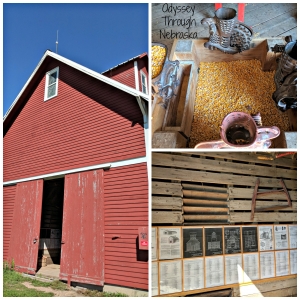 The smaller barn is set for visitors to understand corn production. Old time blue prints line the wall to explain about some of the machinery that would have been necessary to produce corn. Working small implements are set out to allow guests to take the corn off the cob. Then interested parties can grind that corn into meal. What I think is interesting is the fact that many of these invention were ingenious. They did help to speed up the process. Yet farming was still a lot of work. This living history farm helps visitors experience the effort that was required to get food on the table.
The smaller barn is set for visitors to understand corn production. Old time blue prints line the wall to explain about some of the machinery that would have been necessary to produce corn. Working small implements are set out to allow guests to take the corn off the cob. Then interested parties can grind that corn into meal. What I think is interesting is the fact that many of these invention were ingenious. They did help to speed up the process. Yet farming was still a lot of work. This living history farm helps visitors experience the effort that was required to get food on the table.
Living History Livestock
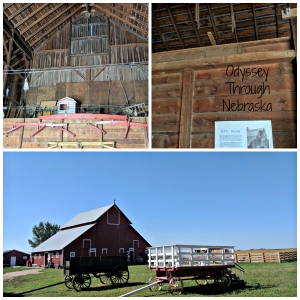 The outbuildings also provide insight into farm animal life. Signs around the perimeter tell more history. Although the barn may be used as a celebration space, the hay mow is still intact. The giant hay hook demonstrates that farming was not for the weak. Animals needed to be fed, no matter what the weather. During the warmer weather, miniature animals live on the farm. Getting to feed the animals is a highlight for kids. Because the animals are smaller, they are less threatening. Some of the area farmers loan out their animals for the season, and others board the animals that the Wessels Farm owns. To keep livestock over winter is rather challenging. Thankfully area farmers are willing to be involved in the process.
The outbuildings also provide insight into farm animal life. Signs around the perimeter tell more history. Although the barn may be used as a celebration space, the hay mow is still intact. The giant hay hook demonstrates that farming was not for the weak. Animals needed to be fed, no matter what the weather. During the warmer weather, miniature animals live on the farm. Getting to feed the animals is a highlight for kids. Because the animals are smaller, they are less threatening. Some of the area farmers loan out their animals for the season, and others board the animals that the Wessels Farm owns. To keep livestock over winter is rather challenging. Thankfully area farmers are willing to be involved in the process.
 Living History Church
Living History Church
Back in 2013, an interesting opportunity was presented to the York foundation would help add another building to the farm. The Zion Lutheran Church in Thayer was declining in numbers. They decided that their days of serving the community were coming to close. Rather than letting the church crumble, they decided to gift the church to the farm. This move was not possible without community support. Here is the article about part of what was involved.
Now the church is at the location, weddings are performed year round. Family reunions can hold church basement potlucks. Gatherings can happen. During Nebraska’s first century, the church would have been the center of the community. How wonderful to see that again being the case at this living history farm.
Living History School
 Across Nebraska during the 1920’s, one room school houses dotted the countryside. Although a farm maybe would not have had a school quite so close to home, farmers often did give up a corner of their land for community education. These small schools would usually provide up to an eighth grade education.
Across Nebraska during the 1920’s, one room school houses dotted the countryside. Although a farm maybe would not have had a school quite so close to home, farmers often did give up a corner of their land for community education. These small schools would usually provide up to an eighth grade education.
Before being moved to Wessels Living History Farm, this school was actually used by the German Reformed Church in Sutton. Students who were taking confirmation classes would gather in this building. With less students taking classes, the church voted to gift the church to Wessels. For teachers who are bringing students on field trips, one of the options is spending several hours experiencing a one room school house.
Living History Experience
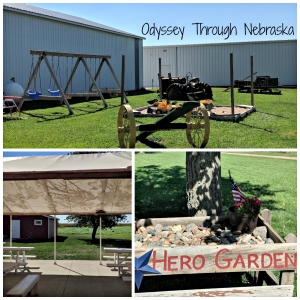 One of the best aspects about Wessels Living History Farm is the fact that they serve multi-generations. Little touches are found throughout that remind the older generations of their own stories. Places to explore and spaces to run are abundant for the younger ones. With a play area and picnic shelter, this is a wonderful place to come together.
One of the best aspects about Wessels Living History Farm is the fact that they serve multi-generations. Little touches are found throughout that remind the older generations of their own stories. Places to explore and spaces to run are abundant for the younger ones. With a play area and picnic shelter, this is a wonderful place to come together.
Admission to the farm is so reasonable. By visiting you help history to live on. Currently Wessels is one of the 2018 Nebraska Passport Stops. This provides a great excuse to go visit this wonderful farm. For teachers, there are several types of field trips that you can set up. Their website is also full of additional resources to add understanding to 1920’s agriculture. Wessels Living History Farm provides a wealth of experiences at their location and even more insights online.
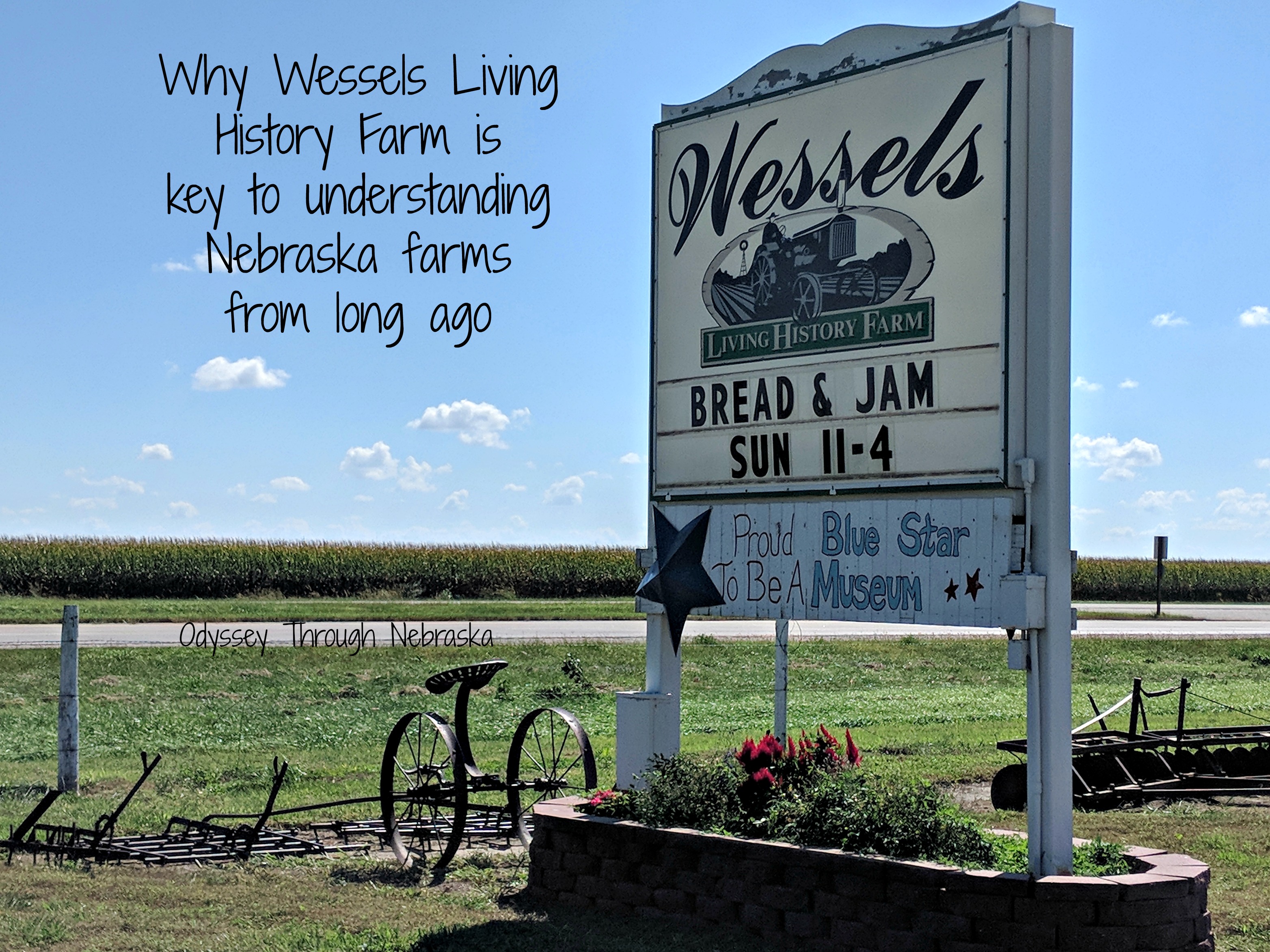
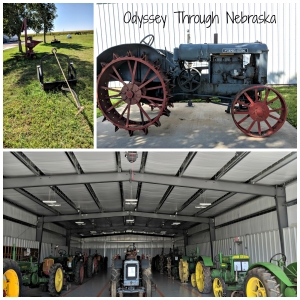
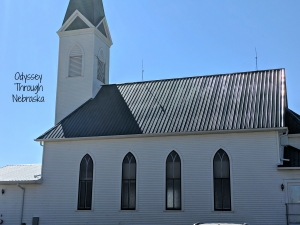
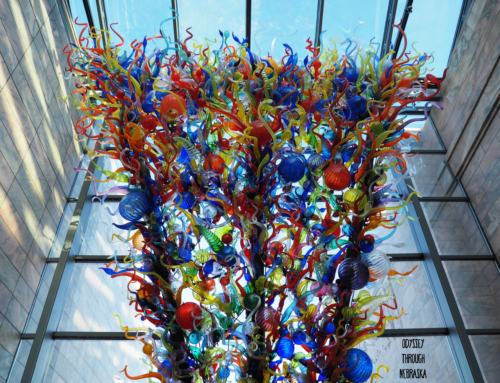


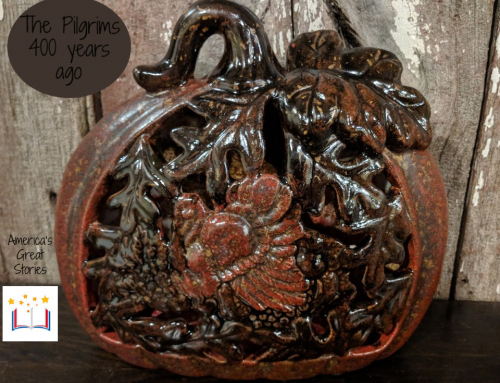

Leave A Comment